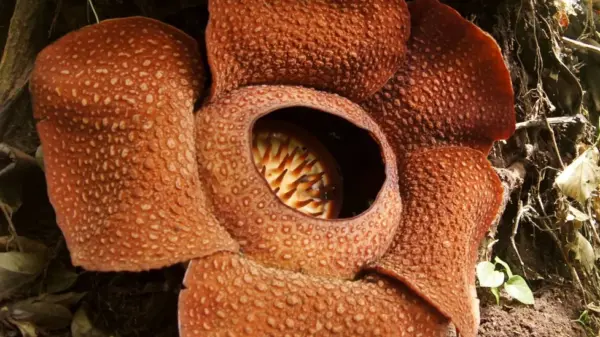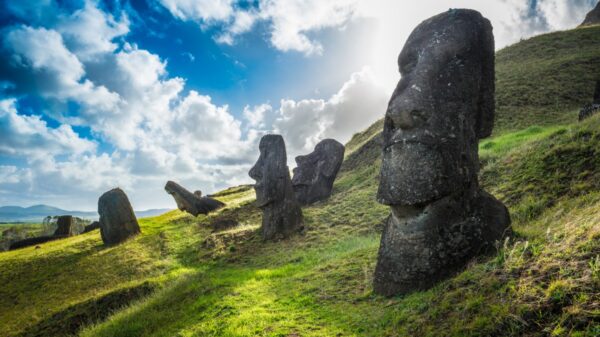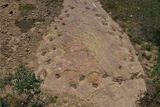A recent study has uncovered remarkable insights into the movement of sauropods, the enormous herbivorous dinosaurs that roamed North America approximately 150 million years ago. Researchers analyzed a trail of fossilized footprints, revealing the closest evidence of agility in these massive creatures. The findings, published in the journal Geomatics, describe a unique trackway that spans about 313 feet and contains around 130 footprints, marking it as the largest and tightest sauropod trackway documented to date.
The study, led by paleontologists Anthony Romilio from the University of Queensland and Paul Murphey from the San Diego Natural History Museum, focuses on a looping trackway discovered at the West Gold Hill Dinosaur Tracksite in Ouray County, Colorado. “This trackway is unique because it is a complete loop,” Romilio stated. “While we may never know why this dinosaur curved back on itself, the trackway preserves an extremely rare chance to study how a giant sauropod handled a tight, looping turn before resuming its original direction of travel.”
A Historical Perspective on Sauropod Movement
During the late Jurassic period, over 20 species of sauropods, including the iconic Diplodocus and Apatosaurus, traversed the North American landscape. While these dinosaurs were known for their size, they were not particularly known for agility. The newly studied trackway, however, showcases a sauropod executing a surprisingly tight turn, a feature that emphasizes the adaptability of these creatures despite their bulk.
The footprints, preserved in sediment for millions of years, present a challenge for scientists seeking to understand the full extent of the sauropod’s movement. “It has been challenging to document these footprints from the ground because of the size of the trackway,” Murphey explained. To overcome this obstacle, the researchers utilized drone technology to capture aerial images of the site, which were then transformed into a high-resolution virtual model. This innovative approach allowed for a comprehensive analysis of the sauropod’s steps and movements.
Insights into Sauropod Agility and Behavior
The detailed model revealed that the sauropod initially traveled northeast before executing a counterclockwise loop, ultimately returning to its original facing direction. “It was clear from the start that this animal began walking toward the northeast, completed a full loop, and then finished facing the same direction again,” Romilio noted.
The study also uncovered subtle variations in the dinosaur’s footprints that indicate changes in its stride. These alterations in foot placement, ranging from narrow to wide, suggest that the sauropod’s walking style was more dynamic than previously thought. “One of the clearest patterns was a variation in the width between left and right footprints, shifting from quite narrow to distinctly wide,” Romilio added. This indicates that the width of the footprints can naturally change as a dinosaur moves, challenging assumptions based on shorter trackway segments.
Moreover, the researchers observed that the length of the sauropod’s steps differed between sides, with one side measuring about 4 inches longer than the other. This finding raises the possibility that the dinosaur may have had a limp or a preference for certain legs, providing further insights into its locomotion and behavior.
The implications of this research extend beyond this particular trackway. Romilio emphasized that the imaging and modeling techniques employed in this study could be applied to analyze other dinosaur tracksites worldwide. “There are many long dinosaur trackways around the world where this method could be applied to extract behavioral information that was previously inaccessible,” he concluded.
This pioneering study not only enhances our understanding of sauropod movement but also opens new avenues for research into the behavior and agility of these fascinating creatures. By combining modern technology with paleontological inquiry, scientists continue to unravel the mysteries of the distant past, bringing new life to our understanding of the dinosaurs that once dominated the Earth.






































































